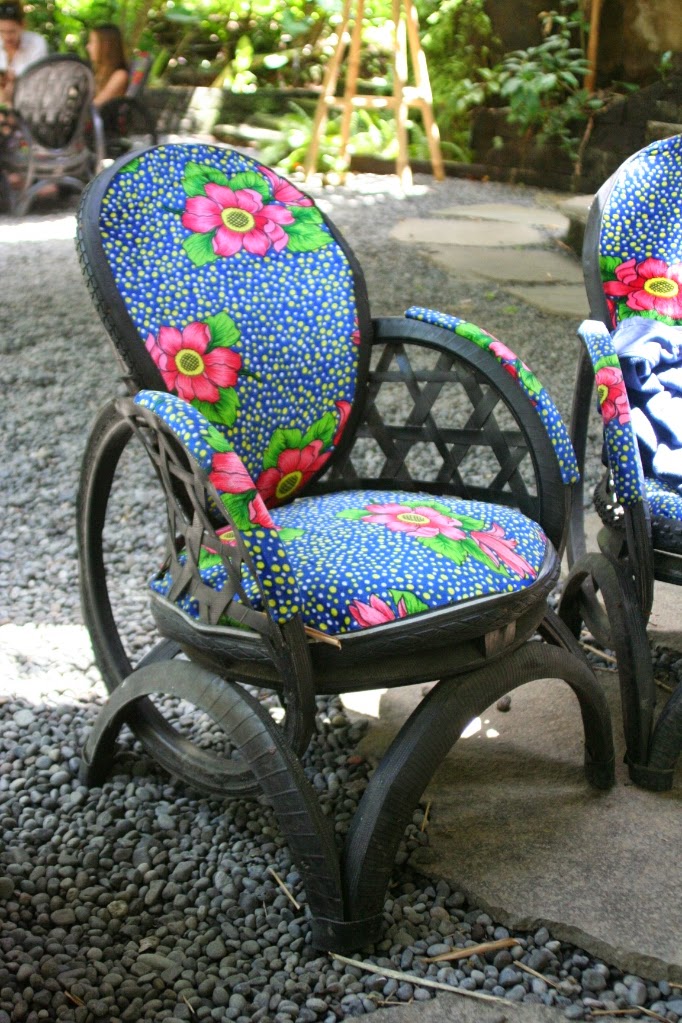 |
| Taste for tofu |
After nearly four weeks in Bali, we finally spent a day at the beach today. Aside from a brief evening watching the sun go down with our host here, we have focused our attention on the interior of the island, which more than merits our singular attention.
Neither of us are particularly beachy people, lured by the opportunity to turn ourselves a delightful golden colour, or to engage in surfing, parasailing, or banana boating. So, a trip to the beach is more an opportunity to sit in awe at nature's wonder - its ability to pound rocks and shells into dust through the repeated crashing of waves, and its twice daily show of kaleidoscopic colour that lights up the sky - and to splash about a bit in the shallows.
We took a taxi to Seminyak beach. This is the more exclusive end of a long stretch of sand on Bali's west coast, the southern part of which is home to the revelry of Kuta. Up at the quieter end, there are few water sports and beach bars give way to expensive bistros. We settled in to a pair of sun loungers and whiled away the afternoon watching a couple of body boarders and surfers tackle the waves.
 |
| Live for this (brief) moment |
Hawkers patrol the beach, either carrying large portfolios of sunglasses under their arms or baskets of assorted items on their heads. We noticed that very few of the items on sale are things that we would want. We already have sunglasses, evident on our face, and don't want a tattoo (temporary or otherwise) or a fake Rolex. One woman seemed to have a basket containing ladles, a cheese grater, and a wooden-handled flick knife. I can't see much use for kitchen equipment on the beach and wondered why they don't sell things we do need or want, such as suntan lotion or ice creams.
 |
| Boondoggles and cheese graters! |
While the waves on the coast of Bali are impressive and certainly larger than those on any of the islands we have visited so far (hence the attraction to surfers), the beach itself is very ordinary. In fact, taking a walk around the locality is very different to the area we are staying, and the other places we have visited on the island. Upscale restaurants serving predominantly western food abound, as do pavements connecting them, allowing tourists to peruse the selection of available cuisines. The Balinese also use the pavement, but drive down it on a moped to get three doors along. It's altogether an odd and unsettling place.
Outside of the centre of Seminyak, the hotels and fancy restaurants are sparser and, in between them, small unnamed warungs make an appearance, in which only Balinese are to be seen. Presumably these will be bulldozed when the land becomes more valuable as high-end properties. Several Balinese have voiced to us that this area is not considered 'Bali'. There is no malice intended in this observation. The tourists are welcome, they say, but they are not visiting Bali.
We dithered over whether to stay and eat in the area or to return home and go to one of our regularly frequented eateries, in which Balinese and tourists eat shoulder to shoulder. We settled on eating at the Queen's Tandoor - an authentic Indian restaurant, which mostly seemed to be patronised by visitors from India.
 |
| #BucketOfDal |
The food was excellent and the people friendly. After poppadom and chutneys, as well as a bonus tomato soup that appeared, we tucked into paneer kashmir masala (Indian cheese in a rich, creamy, but peppery sauce), dal fry (a spicy and chunky dal of split yellow peas), pulau chollay basmati (rice and chickpeas tempered with butter), and garlicky naan bread. It hit the spot for Indian food that we had been missing.















































